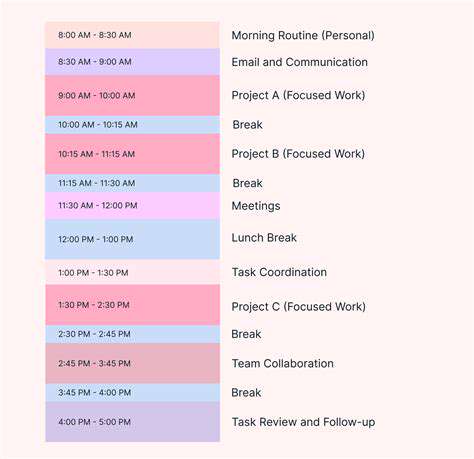How to Write Effective Business Emails
Crafting Compelling Subject Lines
A compelling subject line is the cornerstone of a successful business email. It's the first impression you make, and it dictates whether your recipient opens and reads your message. A poorly written subject line can lead to your email being relegated to the spam folder or simply ignored. Crafting a subject line that's both concise and engaging is crucial. It needs to clearly communicate the email's purpose without being overly promotional or vague. Think about the recipient's perspective and what would pique their interest enough to open the email. Consider using keywords that are relevant to their work or industry.
Specificity is key. Instead of a generic subject line like Project Update, try something more precise like Project Alpha: Q3 Status Update. This immediately tells the recipient what the email is about and encourages them to open it.
Clarity and Conciseness: The Key to Engagement
In the fast-paced world of business communication, clarity and conciseness are paramount. Your subject line should immediately convey the essence of your email. Avoid jargon or overly technical terms that your recipient might not understand. Keep your subject line brief and to the point, ideally under 50 characters. A concise subject line allows the recipient to quickly scan their inbox and prioritize emails based on their relevance.
A well-crafted subject line should act as a mini-summary of the email's content. It should clearly communicate the purpose of the email, the key information it contains, and the action you'd like the recipient to take. For example, instead of a vague subject line like Important Information, use a more specific one like Action Required: Client Proposal Review. This helps the recipient understand the urgency and importance of the email.
Using action verbs in your subject line can also significantly increase open rates. Words like Update, Review, Confirmation, or Request create a sense of urgency and encourage the recipient to act.
Keeping it Relevant and Engaging
To truly maximize engagement, your subject lines need to resonate with the recipient on a personal level, or at least on a level of professional relevance. Consider their needs and interests, and tailor your subject line accordingly. Researching your recipient's professional interests can help you craft a more relevant and engaging subject line. If you know the recipient is interested in a specific topic, referencing that in your subject line can increase the likelihood of them opening the email.
Personalization, while important in the body of the email, can also play a role in the subject line. Using the recipient's name in the subject line can make the email feel more personal and increase the likelihood of being opened. However, avoid being overly promotional or spammy. Balance personalization with clarity and conciseness. A well-balanced approach will help you craft subject lines that stand out from the inbox clutter and encourage recipients to engage with the message.
Ultimately, the goal is to create a subject line that captures attention, conveys the essence of the email, and motivates the recipient to open and read it.

Before you even think about calling the vet, take a moment to carefully assess the situation. Determine what your pet ingested. Was it a known edible item, like a piece of chocolate, or something potentially toxic, like a cleaning product or a plant? Understanding the nature of the ingested substance is crucial. Knowing the quantity consumed is also essential. A small amount of a toxic substance might not be as harmful as a large amount. Look for any visible symptoms your pet is exhibiting, such as vomiting, diarrhea, tremors, or difficulty breathing. Detailed observation of your pet's condition is important before taking any further action.
Read more about How to Write Effective Business Emails
Hot Recommendations
- How to Stay Productive While Working Remotely
- Tips for Managing Conflict with Coworkers
- Entrance & Certification Exams (升学考试)
- How to Improve Your Storytelling Skills (Speaking)
- How to Find Profitable Side Hustles
- Tips for Preparing for the TOEFL iBT Home Edition
- Guide to Switching Careers from [Industry A] to [Industry B]
- How to Run an Effective Hybrid Meeting
- Tips for Marketing Your Side Hustle on Instagram











